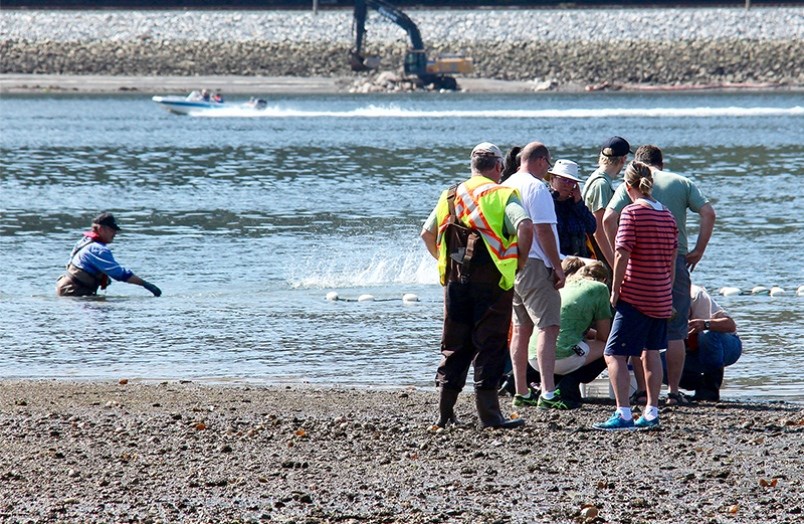The Mossom Creek BioBlitz report should not be ignored just because it contains mostly good news.
Conducted in August by volunteers, supported by various funding groups and written up by noted professional biologist Pam Zevit, the BioBlitz study — basically, a count of all the different species of living things in the watershed — says the Mossom watershed is healthy, supporting at least 377 species, including, plants, insects, marine life and animals.
But instead of merely gloating about its richness, the study offers ideas for other groups interested in doing similar blitzes and recommends the city of Port Moody and the village of Anmore, as well as developers in the area, take a close look at the findings. By doing so, they can ensure they do no harm when they propose projects that are either close to creeks or will affect creeks through removal of tree cover, erosion and runoff.
The BioBlitz report also reminds us that we must pay close attention to the health and well-being of insects, mosses and other tiny creatures because they are the sentinels that tell us if the environment is healthy or degrading.
Finally, the report recommends several small projects that can be done to enhance diversity, such as bird boxes, insect hotels and bat boxes that will not only give people a way to be involved in stewardship but will also, hopefully, mitigate the destruction of habitat in urban areas.
This project is also timely as it is being done while Brilliant Circle Group (BCG) is considering development of its lands in Port Moody and Anmore.
It’s not a mistake that BCG helped fund the project because it has shown an interest in stewardship. And now that the information is available, we now know that any future development needs to take into consideration potential threats to the environment so that future BioBlitzes show more diversity, not less.
Finally, sincere thanks must go to the volunteers from the Burrard Inlet Marine Enhancement Society who participated in the effort to take stock of the count. They have shown that it’s not only important to collect data on the health of our watersheds but necessary to make adjustments and avoid further degradation to these remaining creeks and forest parcels.



